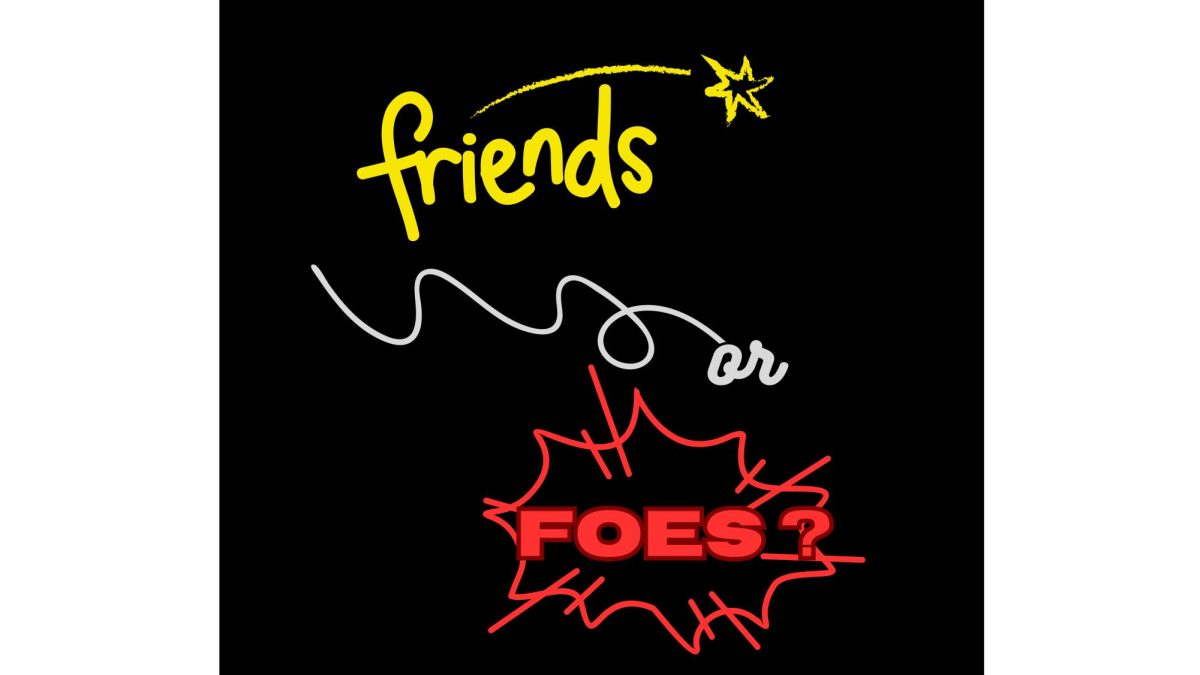Friends, family, foes—out of the three of them, friends and family are invaluable; however, the polar opposite of friendship has its own value. The tension and difficulties created by rivalries shape an individual’s flexibility and further help build resilience to future obstacles.
Friends are typically those who know when to listen and when to lend a hand, and they often have shared interests. In contrast, ‘enemies’ or rivals tend to clash with each other’s morals or interests and can cause much stress. Nonetheless, each person has their own definition and value of a friend and a foe.
“In a friend, I look for someone who is trustworthy, kind, funny, easy to be around, and supportive,” KAP/AP Psychology teacher Andrew Merrick said. “They would cross the line into [a] foe if they betrayed that trust, worked to sabotage the things I wanted to accomplish, or were generally just rude.”
Having an arch-nemesis is never a pleasant experience. Despite its benefits of personal growth and resilience, almost anyone wouldn’t mind the absence of such tensions in their daily life.
“There is enough [stress, anxiety, and annoyance to life] without having an arch-nemesis out there,” Merrick said. “Aside from love, I would say [friendship is] the most important thing in life. [It] has helped me get through tough times, made the good times better, and pushed me to grow in constructive and positive ways.”
At first thought, only having friends and no enemies whatsoever may be tempting, but then the joy of being with your friends would lose its significance if it has nothing to compare itself with.
“There’s [always] going to be people that you dislike as well as people that you like,” junior Olivia Thornton said. “If you’re truly committed to your values, then [it’s hard to like] the people who may disrespect or have an opposing opinion to [them].”
At a younger age, students tend to build friendships based on shared interests and rivalries based on their grades or other school matters. For instance, an elementary school student may be rivals with a straight-A student, whilst in middle and high school, although rivalries still somewhat revolve around grades it is further extended to one’s skills.
“As a kid I viewed everyone as my friend,” Thornton said. “No matter what happened, I just assumed that everyone was my friend, [but as I grew up] I have had to go through the realization that not everyone is your friend.”
The traits of a friend may or may not change from high school to the next milestones in one’s life. For instance, the traits that Merrick looked for in a friend in high school are similar to what he looks for now.
“The main thing that has changed since high school would be how I define those things and what they look like,” Merrick said.
Similarly, rivalries often stem from a clash of interests, points of views, or personal values. Some people may become enemies within their first encounter whilst others may take longer to become foes.
“Problems arise whenever you connect [with] somebody and you view them as a best friend but they don’t view you as a best friend,” Thornton said. “There’s a lot of relationships and friendships where people view each other at two different ‘levels.’”
Friends and enemies are opposites, but their disparate characteristics may be blurred by what is called frenemies.
“[Frenemies are] people who we are too similar to so personalities can clash at times, or when people are too impulsive or reactionary which can result in hurt feelings or things being misconstrued,” Merrick said. “I don’t think those are the healthiest relationships in life to have as they can be frustrating and draining, but they definitely exist!”
Friends, enemies and other types of relationships will always be present in one’s life but of course, creating strong relationships demands a lot of time and trust.
“I think that focusing on finding good, lifelong friends is a very important thing as those are hard and rare relationships to have,” Merrick said. “When you find those people, protect those relationships at all costs and do whatever you can to make you prioritize those people.”



